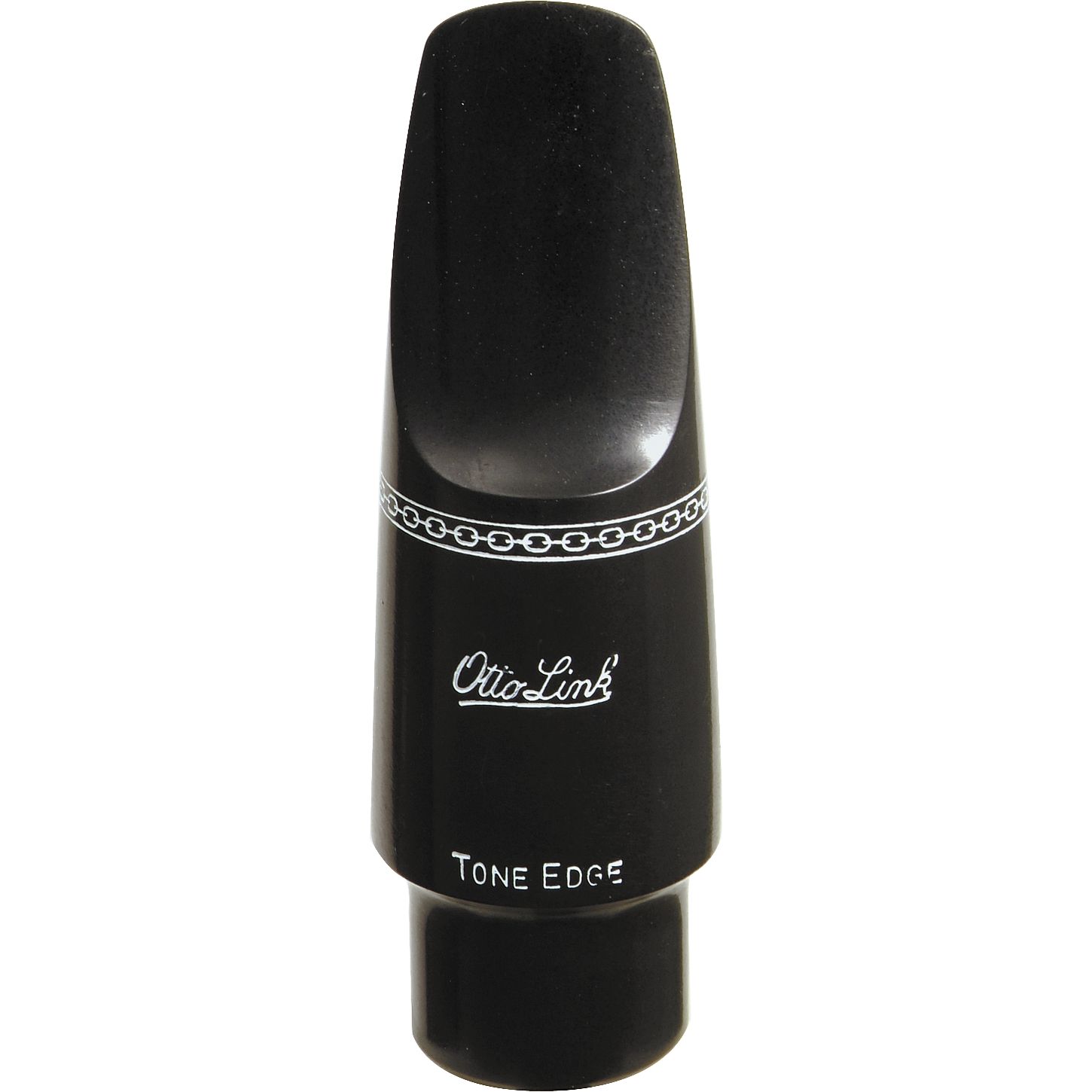Mouthpieces Matter
At the head of any good saxophone sits, snuggly on the neck, a mouthpiece. Mouthpieces may be made of some strange materials, such as bone, glass, crystal or wood, but are usually made of one of three materials: plastic, vulcanized rubber or metal (usually bronze or stainless steel). The most common of the three materials is plastic, as most saxophones come with at least a plastic mouthpiece. Plastic is a good material. It's inexpensive and efficient- it gets the job done. Although, some are of much better quality than others. My first alto saxophone actually had a misshaped plastic mouthpiece, which I didn't find out until I was good enough to notice that the sound was far less than desirable at my level. They often times crack, not in any noticeable way. Tiny cracks on the bevel are common with some lesser quality mouthpieces. It is through this, and many other experiences that I recommend the same thing to everybody: when you purchase a new saxophone, always buy a new mouthpiece for it. For some reason beyond the common realm of logic, new saxophones, both top quality and not-so-top quality, always come with terrible mouthpieces. They suffice for younger students, as they produce the appropriate vibrations necessary for playing saxophone, but generally, I urge any owner of a new saxophone to get a complementary mouthpiece.
 |
| Otto Link Hard Rubber for Alto Sax |
Ultimately, there are good plastic mouthpieces in the world. I've seen some pretty nifty ones- you need only look. However, what I own for my alto saxophone and just love to bits is an Otto Link hard rubber, or vulcanized rubber, mouthpiece with a six facing and a tonal ridge, or tone edge. Hard rubber generally offers a warmer, or darker setting to your tone, as it has for me. It's superb for warm and gentle classical solos in a concert band situation. I opted for the tonal ridge, literally a ridge inside the mouthpiece that amplifies the sound a bit, so that I could achieve both warm and gentle, as well as loud and bright depending on the piece or my situation. With the six facing - facing being the gap between the tip of the mouthpiece and the reed (dependent, of course, on the angle of the 'facing') - I get more control over a wider range: I can play lows, either buzzy or not, and can maneuver through altissimo. In the end, I can play classical arrangements with the hard rubber, and jazz with the tonal ridge and the six facing. Hard rubber pieces come in many shapes and sizes. Not all have facings of six and tonal ridges. A purely classical hard rubber mouthpiece might have a three facing and smooth bevel. When it comes to the facing of a mouthpiece, it's purely up to the user, though I widely recommend either a six or seven facing, for alto saxophone especially.
All of this applies as well to metal mouthpieces, something I've always been a bit infatuated with. While guitars have amps to drive up their loudness, saxophones have the equivalent metal mouthpieces. My curved soprano saxophone currently has one. It's a sturdy little sax, and with the added metal mouthpiece, it shreds through anything else in the way- truly a spectacular soloing instrument for a big band. Metal is notoriously bright, and many don't agree with using it. It takes a lot of control not to over blow while using one, and it has the potential to simply be too much. However, when it comes to a competent solo jazz player, a metal mouthpiece can really bring out the saxophone's signature sound quality- no matter which type you play. Unfortunately, metal can be expensive to have as a mouthpiece. A solid price for such a piece, given that the craftsmanship and overall quality is good, is just over a hundred US dollars. If you don't care about quality, for whatever reason (second instrument, practice instrument and so on), you can find them, depending on the sax type, for much cheaper. If you have the money though, you should go for a nicer quality mouthpiece- just don't hit your teeth on it.
 |
| Rovner Dark for Alto Sax |
Depending on the sound you're aiming to get, mouthpieces can make all the difference, though a good ligature to match is just as important. There isn't a whole lot to say about ligatures physically, but a good amount of research is very important, as different mouthpiece types may take different ligatures. Skinnier metal pieces take special ligatures, although all of them are the same in how they work. Basically, the less amount of material pushing on the reed, the better. This allows your embouchure to do all the work and, depending on the ligature, offers an even darker or lighter quality. The ligature that commonly comes with a saxophone's mouthpiece should go where that original mouthpiece does: not your saxophone! Leave the pair aside as a backup, then buy a new mouthpiece and a ligature- do not just use the ligature that comes with the new mouthpiece. The thin dual-screw metal ligatures break easily and offer no musical depth whatsoever. There are very inexpensive alternatives you can invest in. I have a Rovner Dark ligature, for instance, and you may notice that it looks quite different. It's a nice ligature and makes a big difference. There are also ring ligatures or band ligatures, mesh, or other alternative ligature types. Options abound, so don't ever settle for less. Mouthpieces do matter!

No comments:
Post a Comment